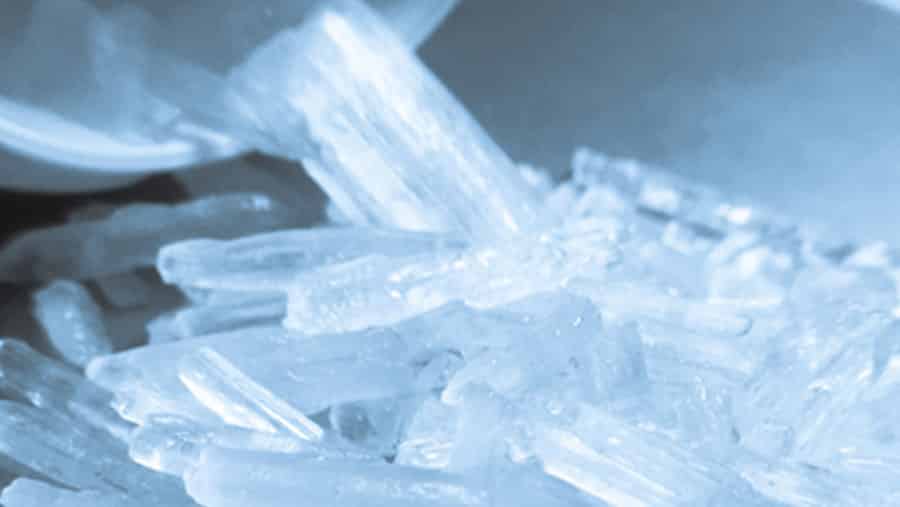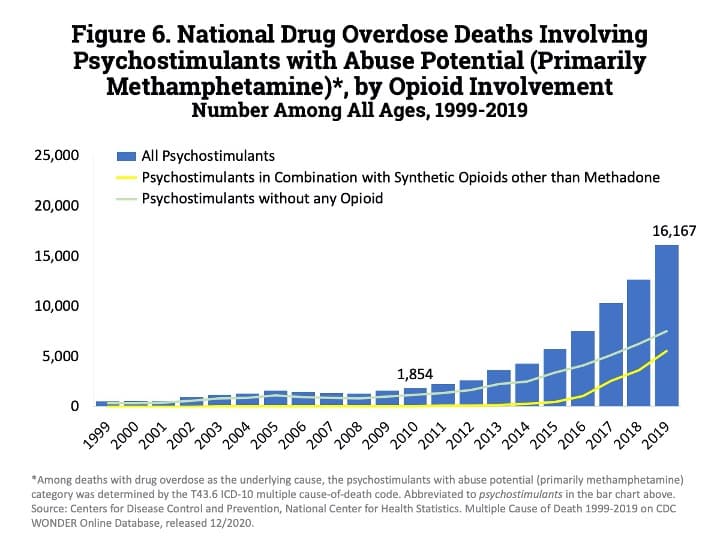How to Tell If Someone is on Meth, What is Meth Mouth, & How to Get Off Meth
Most people have seen questionable folks pacing in front of 7-Elevens, talking to themselves, wide awake at inhuman hours. They have enlarged pupils, beads of sweat, a frantic demeanor, and pick their skin. Without giving it any thought, one does not know how to tell if someone is on meth or if they are just mentally insane. But there are a few noticeable characteristics of an active meth user while high. Hallucinations caused by meth are often characterized by extreme paranoia coupled with delusions, “shadow people”, and obsessive fixations are a few ways how to tell if someone is on meth.

There are other ways how to tell if someone is on meth, like the picking apart of objects to find hidden items or scrounging carpets for imaginary fragments of meth that may have been dropped. These hallucinations become especially severe the longer the user does not sleep or eat. Weight loss, malnutrition and over-exertion are also how to tell if someone is on meth. Due to the appetite suppressing quality of stimulant drugs, many methamphetamine users will lose significant weight and experience malnutrition due to the extreme nutrient deprivation, often coupled with severe physical over-exertion over the course of many days. Meth mouth is another way how to tell if someone is on meth, which will be discussed later.
Many first-time users will use meth again, often becoming regular users or addicts. According to the 2017 National Survey on Drug Use and Health (NSDUH), approximately 1.6 million people (0.6 percent of the population) reported using methamphetamine in the past year, and 774,000 (0.3 percent) reported using it in the past month. The average age of new methamphetamine users in 2016 was 23.3 years old. With such a high usage, people ask themselves how to get off of meth a lot. We will discuss some of the best ways how to get off of meth.

Short Term vs. Long Term Meth Use & Addiction
Also known as crystal, ice, and speed, Meth is a very addictive drug that can be ingested in many ways, most commonly: smoked, injected, and snorted. The high from meth can be very long lasting, up to 12 hours, and usually prompts a massive release of dopamine and euphoria. According to The Addiction Center, “Meth produces a “rush” when smoked or injected; this is caused by an increase in heart rate, blood pressure, and pleasure-inducing neurotransmitters in the brain”. The use of methamphetamine is always classified as drug abuse, given the intensity and severity of the effects it produces.
In the short term, or upon initial intake of the drug, a person using meth will likely experience a rapid heart rate, paranoia, diarrhea, insomnia, shortness of breath, elation, agitation, and even aggression or violent behavior. Prolonged use can result in a wide range of physically and mentally deteriorating symptoms, like heart arrhythmias, high blood pressure, anxiety, and psychosis. It can also negatively affect ability to learn long-term. Using meth intravenously increases the risk of contracting blood borne diseases of all kinds, including HIV and Hepatitis from needle sharing. Snorting meth can destroy the nasal passages. In whatever way the drug is ingested, the risk of heart attack, seizure, and stroke are always present, the most dangerous of which being a lethal overdose. Other long-term effects include: “psychosis, including: paranoia, hallucinations, repetitive motor activity, changes in brain structure and function, deficits in thinking and motor skills, increased distractibility, memory loss, aggressive or violent behavior, mood disturbances, severe dental problems, and weight loss”, according to drugabuse.gov.
Check Your Insurance Coverage for FREE
Find out if your insurance covers addiction treatment in minutes. We accept most insurance!
What Is Meth Mouth?
Meth mouth is another way how to tell if someone is on meth. But what is meth mouth? The long-term use of methamphetamine is commonly associated with severe dental decay, often referred to as “meth mouth”. According to mouthhealthy.org, “Meth mouth is characterized by severe tooth decay and gum disease, which often causes teeth to break or fall out. An examination of the mouths of 571 methamphetamine users showed: 96% had cavities, 58% had untreated tooth decay, and 31% had six or more missing teeth”. Aspects of meth mouth include: dry mouth, cracked teeth, loose teeth, or missing teeth, lockjaw, gum disease, micro lesions, teeth grinding or clenching, rotting teeth, and bad breath. This common condition of long-term meth use is caused by a variety of factors, but is primarily due to long periods of poor dental hygiene, lack of proper nutrition, and increased intake of sugary foods. As one might imagine, the severity of damage only gets worse the longer the individual smokes the drug. Factoring in the risk of stroke, heart attack, and brain damage, meth could be considered one of the most dangerous drugs aside from opioids, which kill drug users at an alarming rate.
How to Get Off Meth
Attempting to quit one of the world’s most addictive drugs might seem like a daunting if not impossible task. Million’s of people ponder how to get off of meth. The receptors of a meth addict’s brain has often been permanently damaged and rewired, and the compulsion to use may be so strong that quitting entirely feels like a pipe dream. Regardless of the seemingly large hurdles, there are always resources and options that can help. Here are the best ways how to get off of meth.
Simple distractions, exercise, and healthy eating may not be enough to get off meth permanently. In these cases, a detox program, in-patient residential program, or an outpatient program that has accountability structures in place, like drug testing and therapeutic groups, are some steps how to get off of meth. Setting up a support system and therapy are also other ways how to get off of meth. By attending a 12-step meeting or a support group of some kind, these drug users will find others who have been through the same thing and made it to the other side, providing them a sense of hope and inspiration. Utilizing psychiatric help may also be of great use; getting assessed for any pre-existing mental disorders or physical issues which may have lead to self-medicating an undiagnosed mental illness like depression, anxiety, ADHD, or a mood disorder.
Reach out to Hotel California by the Sea
We specialize in treating addiction and other co-occurring disorders, such as PTSD. Our Admissions specialists are available to walk you through the best options for treating your addiction.
So if you or someone you love are trying to get off meth, there is hope. Though there may be some damage to the nervous system and the brain after long term use, but studies show that most of the neurological damage is reversible, according to the National Institute on Drug Abuse. There are a plethora of options for treatment and endless directories of 12 step meetings and support groups one can attend. Recovery and freedom from meth is possible!
References:
https://www.mouthhealthy.org/en/az-topics/m/meth-mouth
https://www.drugabuse.gov/publications/research-reports/methamphetamine/what-are-long-term-effects-methamphetamine-misuse
https://teens.drugabuse.gov/teachers/mind-matters/methamphetamine
What is the scope of methamphetamine misuse in the United States? | National Institute on Drug Abuse (NIDA)
https://pubmed.ncbi.nlm.nih.gov/16128721/
